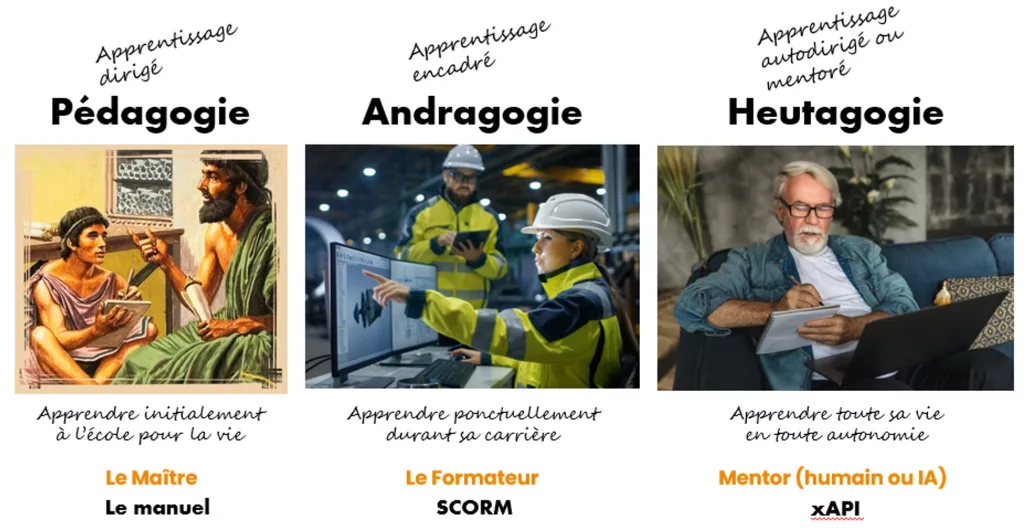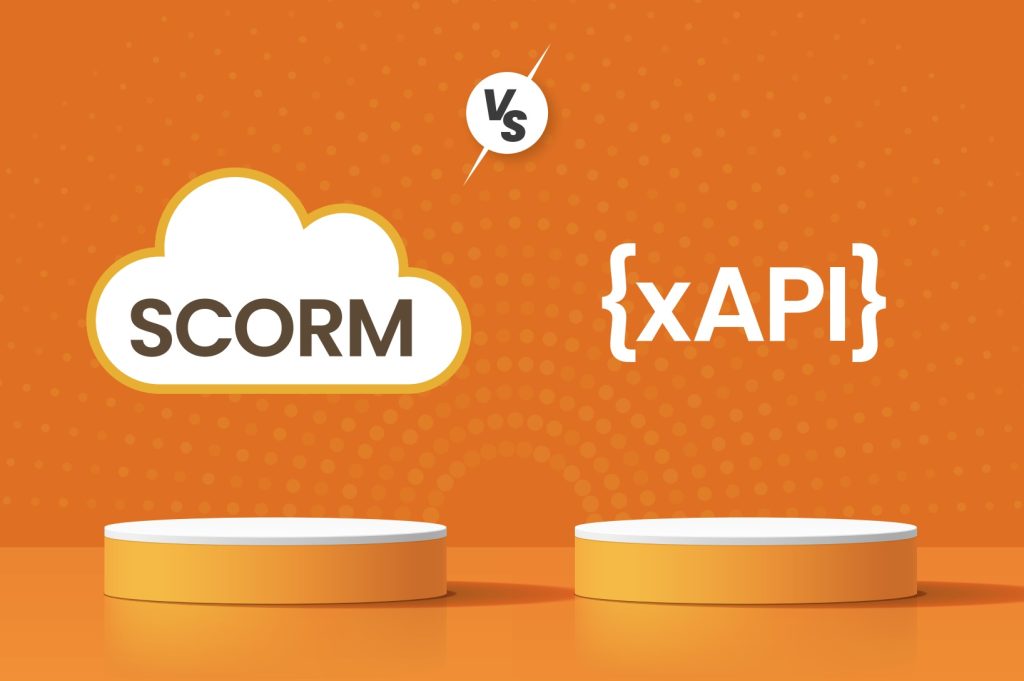In the world of professional training, educational innovation is essential to effectively respond to the evolving needs of learners and organizations. . Educational technologies such as SCORM® (Sharable Content Object Reference Model) and TinCan® (also known as Experience API or xAPI) play a key role in this dynamic, providing normative frameworks for creation, distribution and tracking training content
Why did you create SCORM®
Created in the 1980s, SCORM® responded to an urgent need for standardization of professional training processes, from the distribution of content to the feedback of information. Its objective was to enable the transversality of content and the interoperability of distribution tools, in particular learning management systems (LMS). SCORM® has opened the way to more sophisticated training course design strategies, in particular by facilitating the adaptation of courses to the profiles and skills of learners.
SCORM® developments
SCORM® is marked by the educational vision of its time, focusing on unitary educational grains (SCOs) distributed in isolation to the learner with a single score. With the evolution of versions, notably SCORM 1.2 and SCORM 2004 4th, we note a divergence in the adaptation of LMS platforms, going from MonoSCO, limited to a single content and a single score, to MultiSCO, which allows flexible organization of educational content and reporting of scores at several stages, thus offering richness in the design of training courses.
The SCORM Package concept has brought even greater flexibility, allowing deep personalization of learning paths according to the specific needs of learners and the targeted educational objectives. Through an XML manifest file, instructors can now structure SCOs and associated resources to create a learning environment that adapts not only to individual learner progress, but also to innovative teaching strategies. This opens the door to a variety of teaching methods, from strict performance-based sequencing, to free exploration of content, to conditional scenarios that dynamically respond to learner interactions.
However, the inherent limitations of SCORM, mainly its rigid framework and its design oriented towards unidirectional interactions, have become evident in the face of evolving educational paradigms. The emergence of dynamic and multimodal learning formats – such as serious games, webinars, MOOCs, and immersive experiences (VR, AR) – calls for a review of monitoring and educational interaction mechanisms. The introduction of xAPI represents a response to this demand, expanding the spectrum of traceable activities beyond traditional boundaries, embracing a holistic vision of learning where every action becomes an opportunity for enrichment and development. With its ability to integrate diverse learning experiences and its open architecture, xAPI is positioned as a natural evolution towards learner-centered pedagogy, promoting autonomous, interactive, and deeply personalized learning.
xAPI, be bold
The Experience API, better known as xAPI, revolutionizes training by providing each educational resource with a unique communication capability within a centralized training management system, all via an open and flexible programming interface. A successor to SCORM, xAPI stands out for its flexibility and openness, requiring a Learning Record Store (LRS) to store and analyze learning data. This technology allows a global design of learning, where each interaction, whether an exchange with other learners, a consultation of materials, or engagement in multimedia activities, contributes to the educational trajectory of the individual. Even more, xAPI can integrate offline experiences with asynchronous data integration, such as those from virtual reality experiences, thereby enriching the learner’s learning record with a wide variety of experiences.
The path to SMART Learning
The transition to SMART Learning represents a liberation from traditional training constraints, placing the learner at the center of a limitless learning universe. This educational approach redefines the pace of learning, allowing each individual to progress on their own terms, freed from the restrictions imposed by conventional teaching content and methods. In this ecosystem, the learner takes control of their personal and professional development, evolving autonomously through a personalized learning journey. The role of the trainer transforms into that of a mentor, who guides rather than instructs, enriching the formative journey with a diversity of resources and tools adapted to the needs and aspirations of each student. Artificial intelligence (AI) is adding to this landscape as a learning enabler, capable of analyzing and responding to learner behaviors to optimize their educational experience. Thus, education is redefining itself as a pillar of continuous development, anchored in adaptability, interaction and personalization.


